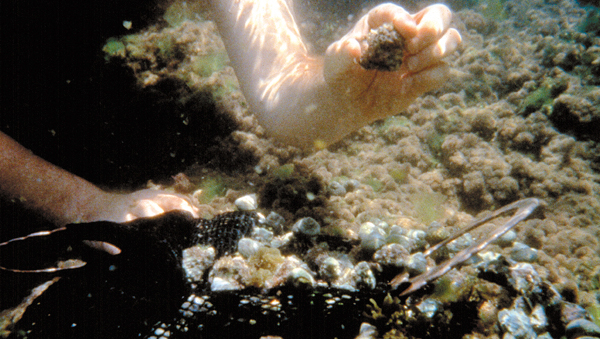Image Details

Photo Courtesy of the Author
With algae covering its shell, the Murex snail blends humbly into its natural sea-floor habitat (shown here). It has long been known, from classical writers and the discoveries of archaeology, that a gland in the body of the snail was the source of the brilliant purple dye used to color royal and priestly garments in biblical, Roman and Byzantine times. The Talmud says that the blue dye prized by Jews was also obtained from a snail (chilazon), one found in these same waters—a strong hint that both the biblical blue and purple dyes came from the same source. But a failure to understand the chemistry involved led many investigators astray.
The serendipitous discovery in the 1970s by a Tel Aviv chemist named Otto Elsner revealed the answer: Just leave the purple dye solution from the Murex snail out in the sun! The purple chemical dibromoindigo reacts with sunlight to lose its bromine atoms: What is left is indigo—similar to the brilliant blue of the sea.
